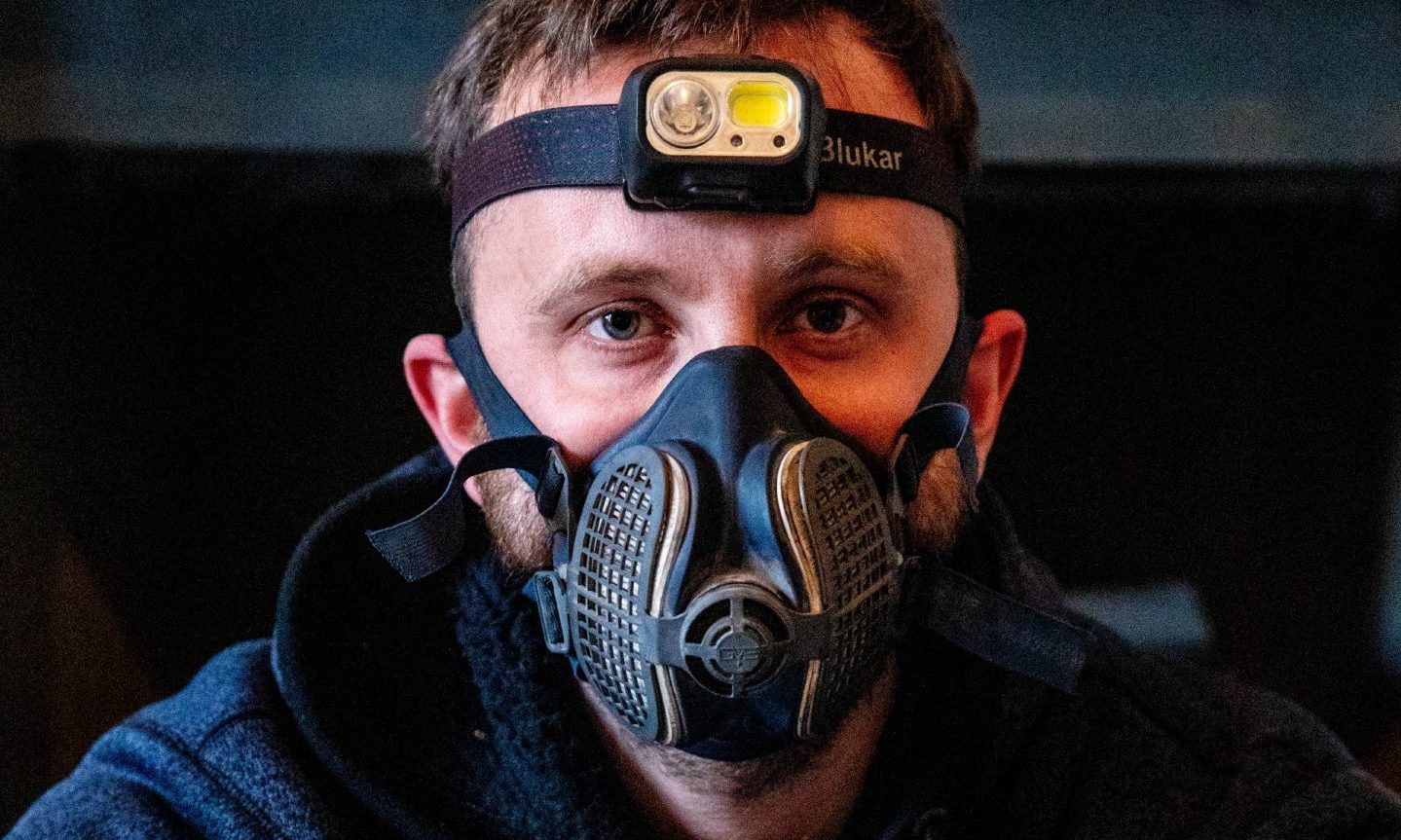It is very rare that St Andrews is not bustling with students and tourists, with traffic weaving its way through the town’s ancient streets.
However, just outside the noisy town centre is a peaceful 18-acre botanic garden on the Canongate that dates back to 1960.
St Andrews Botanic Garden has now achieved net zero and is on a mission to understand – and help visitors understand – conservation and nature during a time of biodiversity and climate crises.
In many ways it is an unconventional space, undergoing a radical reimagination when its glasshouses were shut over the last couple of years.
Dr Harry Watkins is the director of the botanic garden, which he says is full of “experiments” and aims to be “thought provoking”.
“We are very concerned about the climate emergency”, he explains.
“A lot of the garden looks very untidy and atypical.
“But we want to show people that doing something different is essential and it’s going to look different too.
“We need a fresh think about how we look at ourselves as a part of nature.”
Harry is taking me on a tour of the botanic garden’s many features when I meet him.
It is a windless Autumn day and the colours of the tree’s leaves and plants in the garden are stunning.
Why is the St Andrews Botanic Garden home to a sand dune system?
One of the most unique features is a sand dune system.
It is thought to be the only one in a botanic garden and is part of the Tangled Bank project, which was launched ahead of COP26 in 2021.
Harry and his colleagues want to help research how we can protect sand dunes.
We walk on a boardwalk through the middle of the dunes, which feels bizarre because we are nowhere near the sea.
“This is an experiment about how some of our most precious and fragile ecosystems are at risk of invasion by plants”, explains Harry.
“We’ve started setting up the habitat and into this we will introduce plants that have the potential to become invasive.
“You can feel what it’s like to be in the dunes and see all the tiny plants close-up.”
‘World first experiment’
The bioscope is another unique feature of the garden that is enjoyed by birdwatchers.
The garden teamed up with a group of architects from the University College of London to design the structure of the unusual shelter.
It is constructed from algae, doesn’t use any screws, and is held together by friction.
“Construction creates about 30% of society’s carbon footprint”, explains Harry.
“But here we have the first panels in the world to be made using this technique.
“The algae binds material together and it’s actually slowly sequestering (capturing and storing) carbon as we speak.
“This prototype is an alternative to bricks, but has the same compressive strength.
“We get loads of red squirrels here and visitors love seeing them.
“You can sit here and watch nature, knowing you’re part of a world first experiment.”
What benefits will edible meadows bring to the garden?
We continue our tour and approach the previous locations of the glass houses.
Edible meadows are part of the plans for this area by summer 2025.
But one of the pre-existing glass houses partially remains and hosts climbing plants.
“Eating the plants is good for your gut, the environment, your mind and your wellbeing”, says Harry.
“We want to make it possible for visitors to pick plants out of the ground and eat them.
“It will be nice to walk around and just munch on greenery.”
Harry also takes me down towards the far end of the garden near Kinness Burn.
This is home to some climbing equipment made out of natural wood.
“We made this out of trees that were felled during storms Arwen and Barra”, he adds.
“It took a little bit more work. But it is possible to go that extra mile.”
It is similar to the ‘standing wood’, which uses fallen trees to examine how biodiversity can thrive in more built up areas.
Teaching the next generations about nature
We continue on towards a scenic waterfall system of ponds, which are apparently popular with red squirrels and herons.
They must have seen us coming on this occasion.
This area of the garden is incredibly quiet, despite the hustle and bustle of the nearby crowds making their way around St Andrews on a Friday afternoon.
But Harry explains that it is not always this way.
The garden often welcomes in Fife and Tayside community groups for lessons on nature and activities such as pond dipping.
“Sometimes it can be quite rambunctious”, he says.
“But in a in a way I love that kind of noise.
“I’m very happy sitting on a bench watching the heron and hearing 20 kids charging up and down the hill.
“It’s a soothing sound and you get a real sense of community here.”
What is the best season to explore the St Andrews Botanic Garden?
As we approach the end of our walk I ask Harry about which season he enjoys the most in the garden.
It’s a timely question as we approach the colder months when people are perhaps less inclined to venture outside.
But he says simply watching the changes the seasons bring is enjoyable and fascinating.
“In the summer, when all the flowers are blooming it is really beautiful”, he says.
“But my favourite time is probably early October.
“In the winter you look at the wildlife a lot more and the story is really about winter berries and wildlife.
“You see birds and spider nests. And the frost is beautiful.
“I’m interested in how we make it easier for people to understand that we are looking at a snapshot in time.
“It ties into curiosity and exploration. Every day there is always something you notice that is different.”
‘Make sure it thrives on our watch’
Upon reaching the end of the quick tour of the garden we come to an ash tree.
It was planted around 30 years ago and stands resolutely in the midday sun – it’s leaves golden and orange.
The tree is part of a garden that has seen radical adaptations in recent years as concerns about climate change reach a crescendo.
“We’re just trying our best to make sure it thrives on our watch”, says Harry as we admire it.
“The curatorial aspect of the job is really important.
“You feel like a steward of the place even though you’re not here for that long in the grander scheme of a tree’s lifespan.
“We want to be sensitive and respectful of heritage.”















Conversation